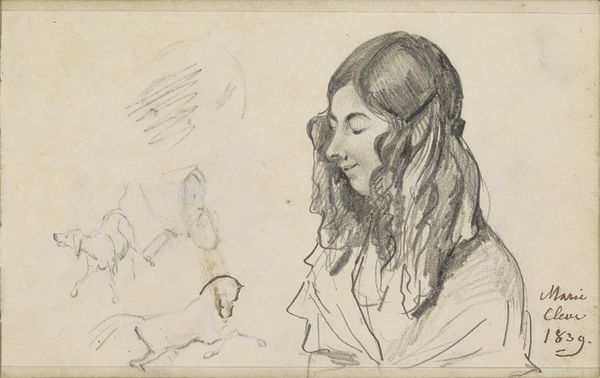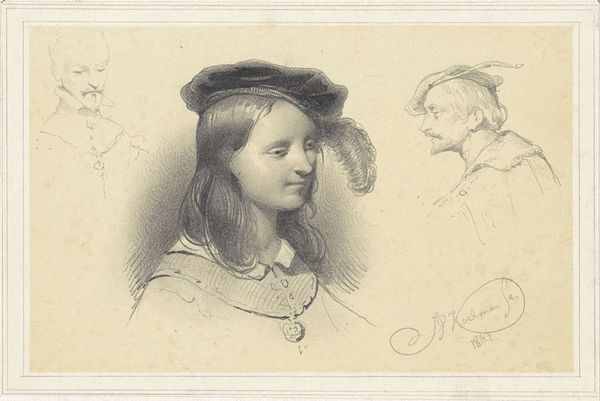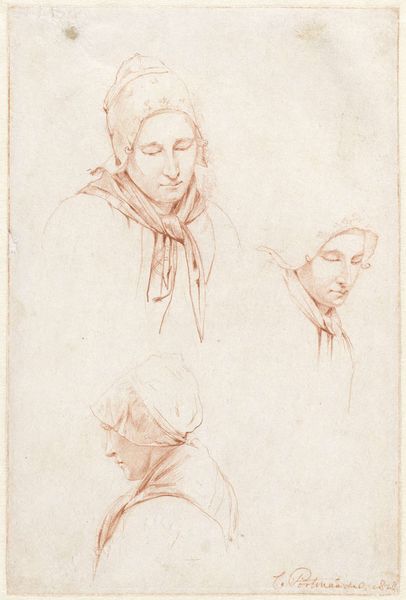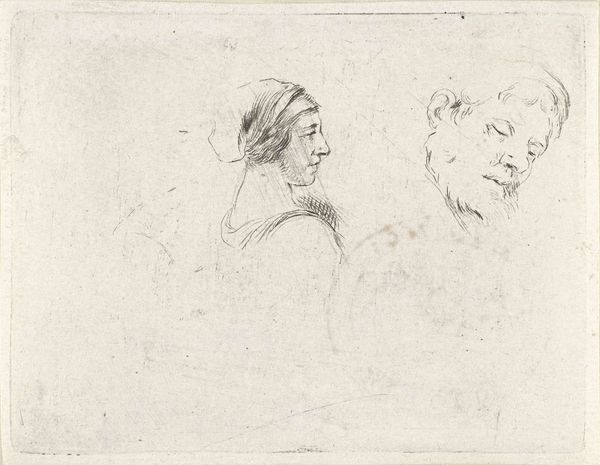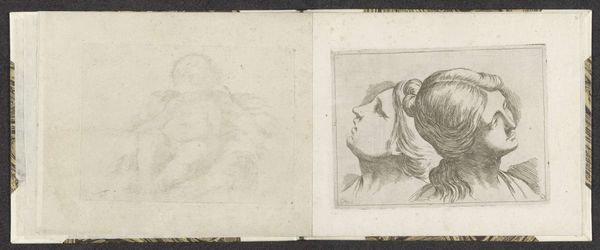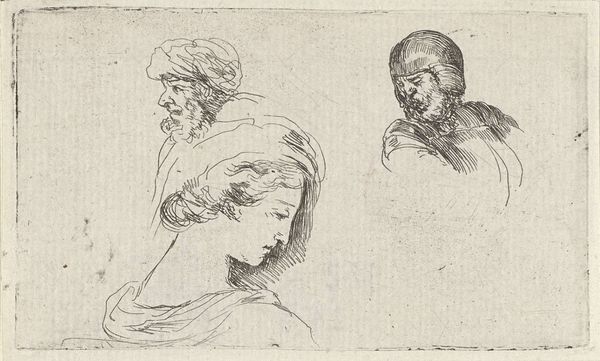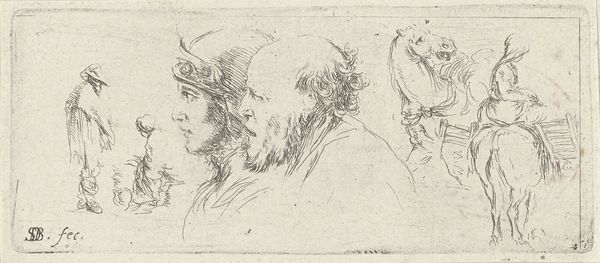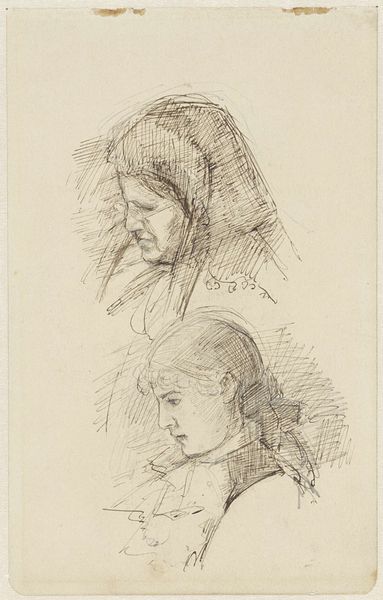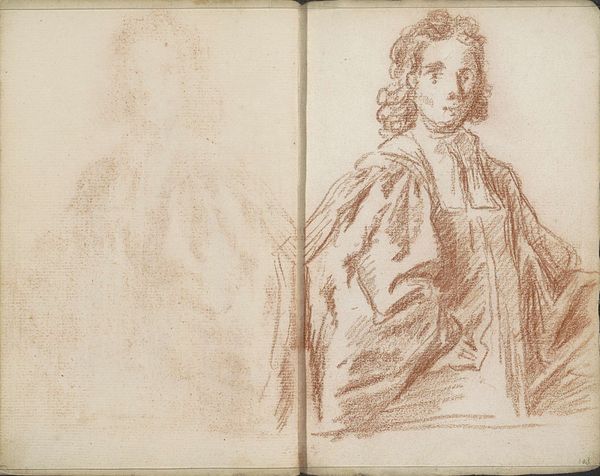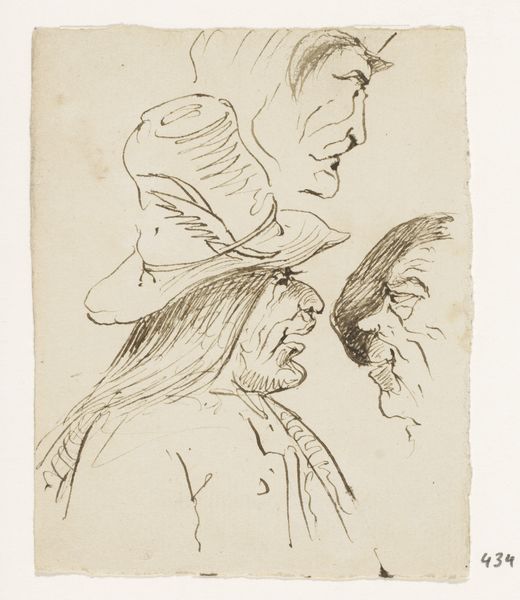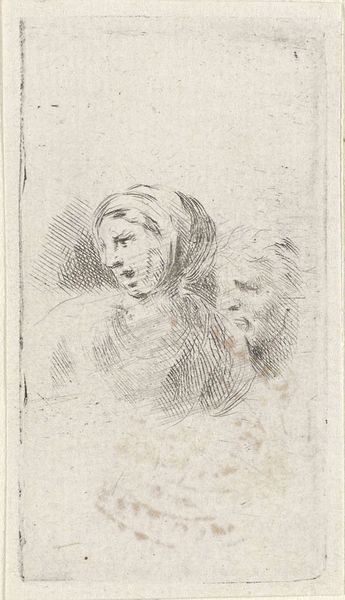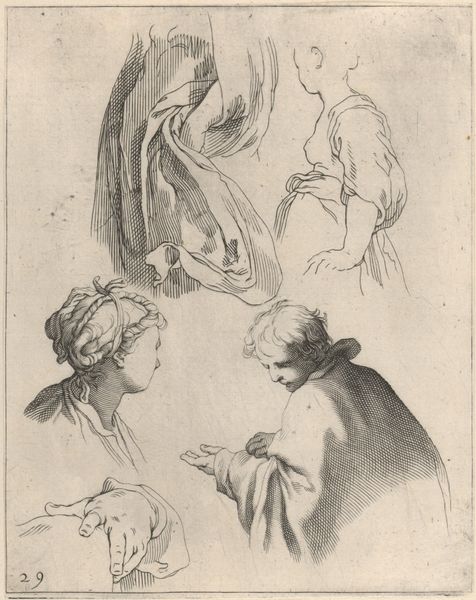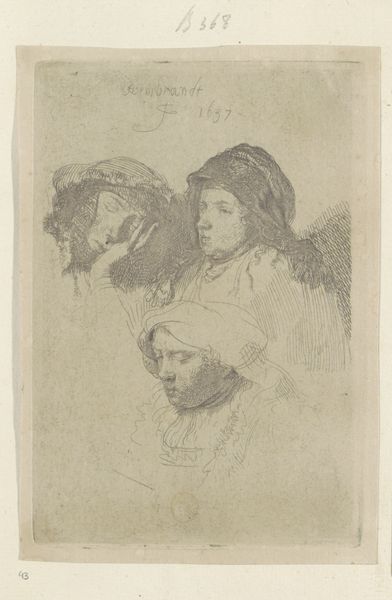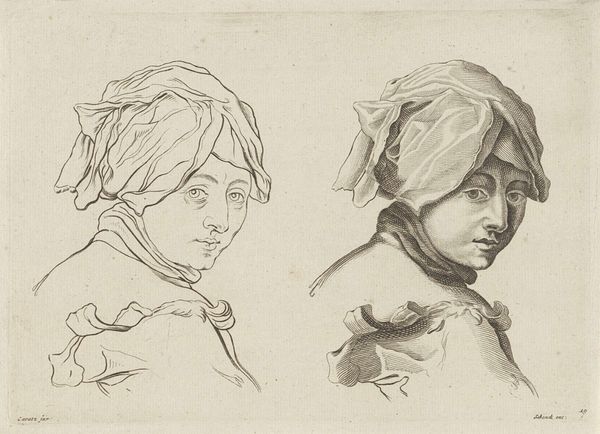
drawing, pencil
#
portrait
#
pencil drawn
#
drawing
#
amateur sketch
#
toned paper
#
light pencil work
#
pencil sketch
#
figuration
#
personal sketchbook
#
pencil drawing
#
romanticism
#
pencil
#
sketchbook drawing
#
portrait drawing
#
sketchbook art
Copyright: Rijks Museum: Open Domain
Editor: Here we have Johannes Tavenraat's "Helena en Cateau Tavenraat", created in 1839. It’s a pencil drawing. I'm really struck by the contrast in the rendering of each sister; the one on the left has more volume than the figure on the right. What draws your eye when you look at this? Curator: My focus is immediately drawn to the application of the medium itself. The artist has achieved varied textures through differing pressures and densities of pencil strokes. Notice the darker, denser hatching on the left figure giving a stronger sense of depth versus the delicate, almost ephemeral quality of the lines on the right. Editor: That makes sense. I see how the shading builds volume. So, is the variation purely a stylistic choice, or does it mean something more? Curator: It is the manipulation of these formal elements—line, tone, and composition—that communicates the artist's intention. Look at how the gaze of both subjects is directed downwards, contained within the pictorial space. What is the effect of this enclosure, reinforced by the tight cropping? Editor: It’s interesting how they aren’t engaging with us. It makes it feel private, like we’re viewing a personal moment. Could this have been a practice sketch then? Curator: Possibly so. And if we view each sitter's likeness as shapes delineated on a surface, we find that the artist plays with degrees of completion and solidity. The planes are carefully constructed on the left versus the almost tentative contours defining the sister on the right. Editor: So, you see the incomplete rendering of the second figure as part of the artistic statement itself, rather than simply… unfinished. It gives me something to consider when looking at other works. Thank you. Curator: Precisely. Formal analysis allows us to interpret "unfinishedness" as an intentional artistic decision. The contrasts in rendering become as expressive as the likenesses themselves.
Comments
No comments
Be the first to comment and join the conversation on the ultimate creative platform.
